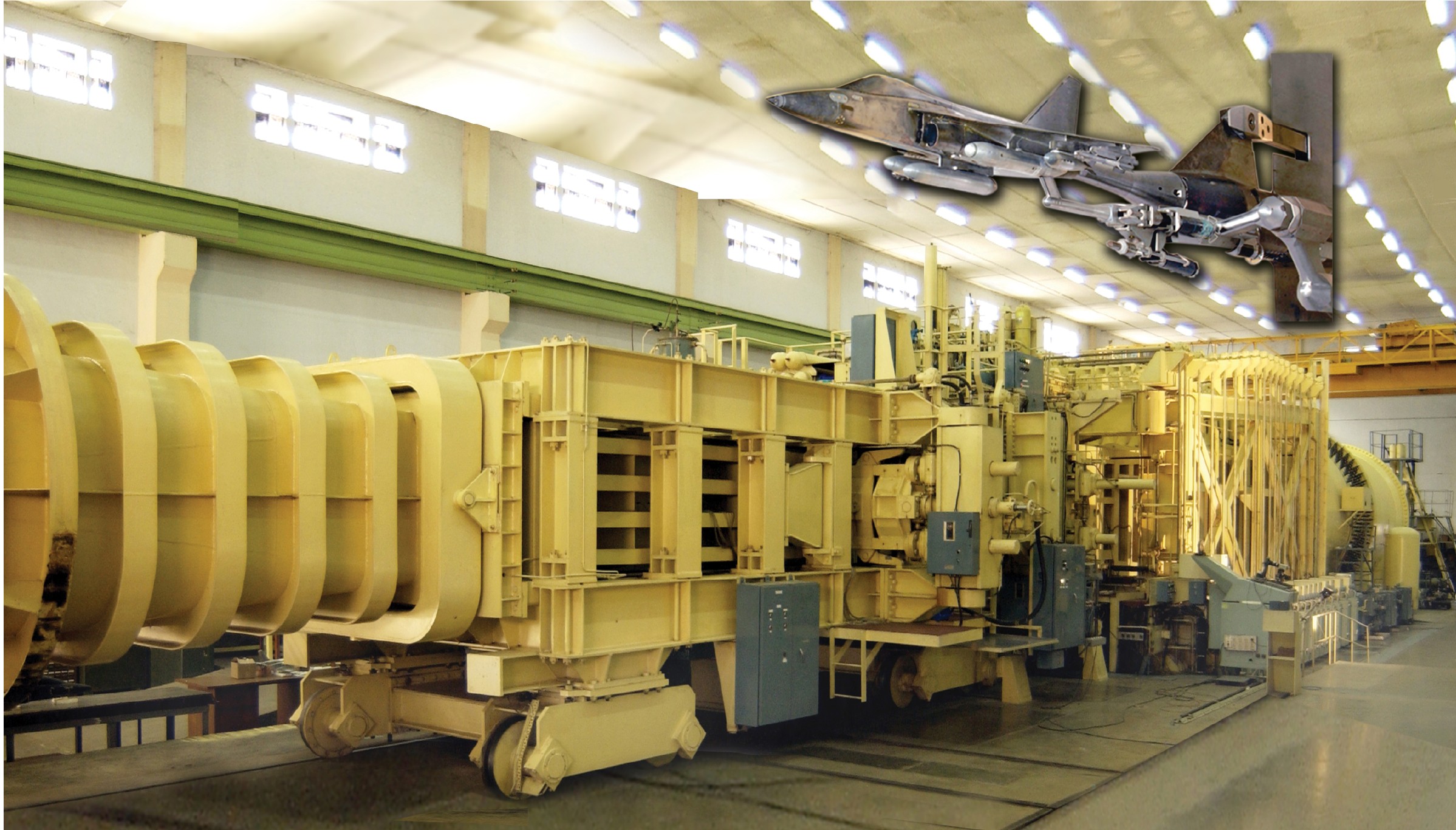The National Trisonic Aerodynamic Facilities (NTAF) division of CSIR-NAL has been serving the country as a nucleus of research and development in the field of aerodynamic characterization successfully over the last five and a half decades. The division is well known for its long and proven experience in providing high-quality vital and strategic experimental aerodynamic data for complex aerospace programs of the country with the unique ability to develop novel and advanced test techniques. NTAF has contributed immensely to all the National programs of CSIR-NAL, DRDO, ISRO and HAL with utmost security and confidentiality.
The major test facilities in NTAF are the 1.2m and 0.6m Trisonic wind tunnels with the auxiliary facilities viz., compressed air facility, design and manufacturing section, ejector facility, shock tunnel, electrical substation etc.
1.2m Trisonic Wind Tunnel Facility:
The 1.2m Trisonic Wind Tunnel has been the workhorse for aerodynamic data generation for the aerospace programs in the country. The 1.2m Trisonic Wind Tunnel along with its auxiliary facilities was erected and commissioned during 1963-67. Over the years, several upgrades/augmentations have been incorporated to meet the wide range of needs of aerospace programs in the country. The Mach Number Range is 0.2 to 4.0 and Reynolds number range is 8x10 6 to 60x 10 6 per meter.

0.6m Trisonic Wind Tunnel Facility
The 0.6m Trisonic Wind Tunnel was indigenously designed, built and commissioned in 1989 to support R&D activities and meet the anticipated increase in test requirements. The Mach Number Range is 0.2 to 4.0 and the Reynolds number range is 8x10 6 to 60x 10 6 per meter
Model Design
The design section is expertized in the design of high-speed wind tunnel models, support systems, strain gauge balances, and test rigs. The design team translates the customer requirements to the scaled wind tunnel models with the design/selection of appropriate measurement sensors and support systems to suit the existing wind tunnel facilities. Solid and surface modelling capability (CATIA/ Solid Works/ Auto CAD), C.A.E. solutions (COSMOS works/ Hyper Works) NC programming (Solid CAM).
Strain Gauge Balance Calibration
To get high accuracy in the measurement of forces and moments on wind tunnel models, the conventional and special strain gauge balances are required to calibrate frequently using calibration rigs.
Steady and Unsteady pressure measurements
- 128 channel high-speed DAS for unsteady pressure measurement with a cut-off frequency of 40 kHz and a 24 channel high-speed wireless system for simultaneous acquisition of unsteady pressure data with a cut-off frequency of 10 kHz.
- 100 channel NI-LabVIEW based multi-port steady pressure measurements system using 32/16 port ESP scanners.
Grid-based Trajectory System (GTS) for store separation studies
GTS is an indigenous system mainly used for performing store separation studies on various missiles to ensure that missile is able to clear the parent aircraft safely during its release. GTS has an automated mechanism to vary the longitudinal and directional axes dynamically during the blowdown.
Air Intake Studies
A variety of special test techniques have been developed to study the performance of air- intakes of aircraft and missile configurations under design and off-design conditions. The air- intake models feature extensive instrumentation for steady and unsteady pressures and special devices like a conical plug to control the mass flow rate during the experiment. State-of-the-art NI-PXIe system is used for data acquisition & control.
Flow Visualization
The novel design of the Schlieren optics system for 0.6m tunnel enables the use of the same optics for the supersonic and transonic visualization without any significant realignment which reduces the downtime significantly. The visualization covers color and monochrome Schlieren, Shadowgraph, video and still photography. Surface flow visualization using oil flow technique can also be done.
Other R&D studies carried out are:
- Control of Transonic flow over a typical launch vehicle model using active and passive methods.
- Control of Shock induced vortex breakdown in the transonic regime on a generic delta wing body configuration.
- Aero-acoustic Characteristics of Compressible Subsonic Elliptical Jets.








